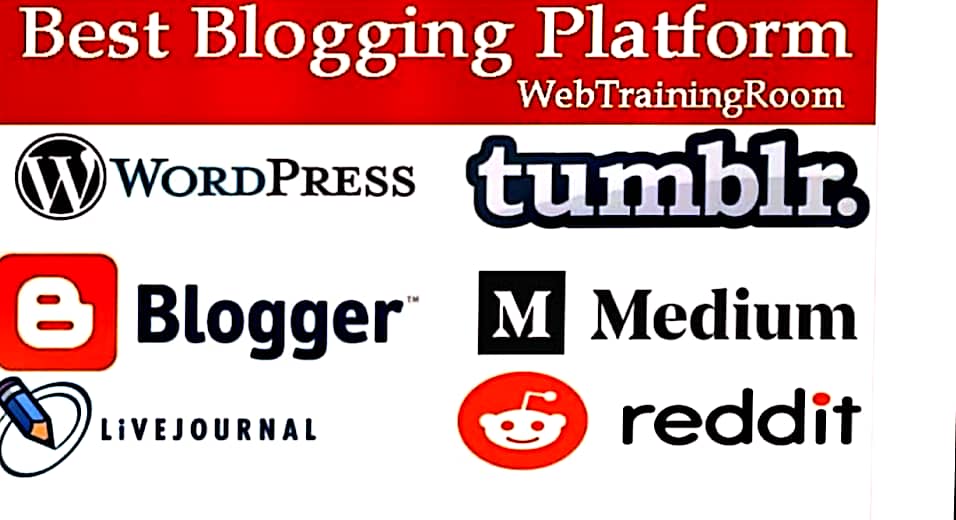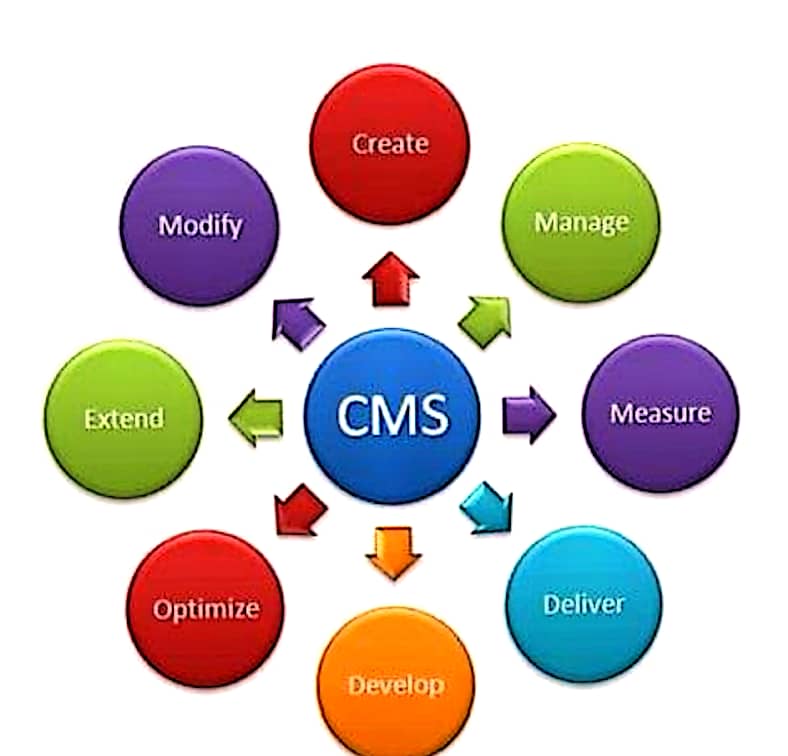Blogging platforms are specialized Content Management Systems (CMS) designed specifically for creating, managing, and publishing blogs.

They offer user-friendly interfaces tailored to the needs of bloggers and content creators.
Here’s an explanation of blogging platforms with examples:

Key Features of Blogging Platforms
Key Features of Blogging Platforms:
• Content Creation: Blogging platforms allow users to easily create and format text, insert media, and publish blog posts.
• Content Organization: They typically organize blog content chronologically with the latest posts appearing at the top.
Posts are often categorized and tagged for easy navigation.
• User Management: Bloggers can manage multiple authors and editors, each with their own access levels.
• Templates and Themes: Most blogging platforms provide a range of templates and themes to customize the appearance of the blog.
• Commenting: Built-in commenting systems or integrations with third-party commenting services allow readers to leave comments on blog posts.
• SEO Optimization: Blogging platforms often offer SEO tools and plugins to help bloggers optimize their content for search engines.
• Social Sharing: They typically include social sharing features, making it easy to share blog posts on social media platforms.
• RSS Feeds: Bloggers can generate RSS feeds to allow readers to subscribe to their content and receive updates.
• Archiving: Blogs usually provide archive pages to browse and access older blog posts.
• Media Management: They allow for easy embedding of images, videos, and other media.
• Mobile Responsiveness: Many modern blogging platforms offer mobile-responsive themes to ensure blogs look good on various devices.
Examples of Blogging Platforms:
o Tumblr
o Jek yll
o Wix
o Squarespace
o Medium
o Blogger
o WordPress
Content Management Systems
❖A Content Management System (CMS) is a software application or platform that allows users to create, manage, and publish digital content easily, typically for websites and web applications.

❖CMSs are designed to simplify content creation and management, making it accessible to individuals with varying levels of technical expertise.
❖They offer a range of features and capabilities that enable users to build and maintain digital content efficiently.
❖Here are key aspects of Content Management Systems:
▪ Content Creation: CMSs provide user-friendly interfaces for creating and editing digital content, including text, images, videos, and other media.
▪ Content Editing: Users can edit content within the CMS without the need for technical knowledge. Common editing features include text formatting, image placement, and hyperlink insertion.
▪ Content Organization: CMSs offer tools for organizing and structuring content, often using a hierarchical system of pages or posts. This facilitates navigation and content management.
▪ User Management: CMSs support user roles and permissions, allowing multiple users to collaborate on content creation and management while controlling who can access, edit, and publish content.
▪ Workflow Management: Many CMSs have workflow features that enable content creators, editors, and administrators to collaborate on content approval and publication processes.
▪ Template and Theming: CMSs often support templates and themes, which control the and layout of the website or application. Users can customize the design without needing to code.
▪ Media Management: CMSs include tools for managing and storing media files, making it easy to embed images, videos, and other assets within content.
▪ SEO Optimization: Many CMSs include built-in SEO features or plugins to help users optimize content for search engines, such as by managing metadata and URL structures.
▪ Responsive Design: Modern CMSs often support responsive design, ensuring that websites and content display properly on various devices and screen sizes.
▪ Multi-Language Support: For international audiences, CMSs may offer multilingual support, enabling the creation of content in multiple languages.
▪ Plugin and Extension Ecosystem: Most CMSs have a library of plugins and extensions that add extra functionality, such as e-commerce capabilities, contact forms, social media integration, and more.
▪ Security: Security is a crucial aspect of CMSs, as they can be targets for hacking. CMSs typically include security features, and users must keep the system and plugins up to date to address vulnerabilities.
❖Popular CMSs include WordPress, Joomla, Drupal, and many others, each with its own strengths and weaknesses.
The choice of CMS depends on factors such as the specific needs of the project, the technical skills of the users, and the desired features and extensibility.
CMSs are widely used for websites, blogs, e-commerce platforms, intranets, and a variety of web applications where content management is a fundamental requirement.
Other Courses : Cloud computing
